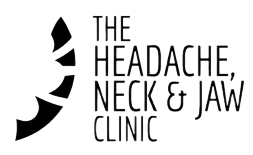Absolutely, tension headaches can come from your neck (have cervicogenic origins). Cervicogenic headaches originate from issues in the cervical spine, specifically the neck and its structures, and they often share similar symptoms with tension headaches. In fact, distinguishing between tension headaches and cervicogenic headaches can sometimes be challenging due to their overlapping characteristics.
Cervicogenic headaches arise from structural problems or dysfunction in the cervical spine, such as:
Muscle Tension
Chronic muscle tension in the neck and upper back can lead to cervicogenic headaches, mimicking the characteristics of tension headaches.
Joint Dysfunction
Problems within the cervical spine’s joints, such as irritation or dysfunction of facet joints, can cause referred pain felt as a headache.
Nerve Irritation
Irritation of nerves in the neck, particularly the upper cervical nerves, can result in pain that radiates to the head, leading to cervicogenic headaches.
Given the shared symptoms and potential overlap between tension headaches and cervicogenic headaches, this evaluation may involve detailed examinations to pinpoint the source of the headache, often focusing on the neck and upper back region. Treatment approaches for cervicogenic headaches might include manual therapy, targeted exercises, postural correction, and other interventions tailored to address the underlying cervical spine issues.
A tension headache is a common type of headache characterized by mild to moderate pain that often feels like a band tightening around the head. These headaches typically cause a steady ache on both sides of the head and may last from several minutes to several days.
Key features of tension headaches include:
Pain Characteristics
The pain associated with tension headaches is often described as a constant pressure or tightness that can vary in intensity. It’s not usually accompanied by throbbing or pulsating sensations.
Location
Tension headaches commonly affect both sides of the head. The pain may radiate from the neck and shoulders to the back of the head or to the temples.
Duration
They can last from a few hours to several days. Chronic tension headaches can persist for extended periods, occurring frequently and significantly impacting daily life.
Triggers
Various factors can trigger tension headaches, including stress, poor posture, lack of sleep, eye strain, fatigue, hunger, or jaw clenching.
Effects
While tension headaches are not usually severe, they can still be bothersome and disruptive to daily activities. They don’t typically cause nausea or vomiting, unlike migraines.
Management
 Management often involves lifestyle changes, stress reduction techniques, over-the-counter pain relievers, relaxation exercises, physical therapy, or, in some cases, prescription medication.
Management often involves lifestyle changes, stress reduction techniques, over-the-counter pain relievers, relaxation exercises, physical therapy, or, in some cases, prescription medication.
Tension headaches are among the most common types of headaches experienced by people worldwide. While they don’t typically indicate a serious underlying condition, chronic or severe tension headaches may warrant medical evaluation to rule out other potential causes and determine the most effective treatment plan.
For effective diagnosis, treatment and ongoing management of tension headaches, book an appointment with the expert team at the Headache Neck and Jaw Clinic.
Other Articles

Nigel Smith, co-founder of The Headache, Neck & Jaw Clinic, has over 20 years of experience as a specialist physiotherapist in jaw, neck, and headache pain management. Initially pursuing sports physiotherapy, Nigel found his true calling in TMJ treatment following a chance encounter with an oral surgeon.
His personal experience with TMJ issues and his dedication to developing conservative treatment pathways have made him a go-to expert for Dentists and oral surgeons seeking alternatives to surgical options.
Nigel’s commitment to excellence includes advanced training with the Watson Headache® Institute and lecturing at the University of Queensland. His expertise, backed by decades of hands-on practice and training, makes him a respected leader in this niche field. You can read more about my background, here.

